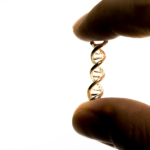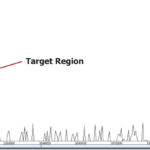Sage Science
Size Analysis of High-Molecular-Weight DNA for Long-Read Sequencing
Discover how to check DNA quality for long-read sequencing using electrophoresis and why pipetting carefully is so important.
Read MoreHow to Isolate DNA from Mitochondria: An Energetic Guide
Mitochondrial DNA isolation can be time-consuming and laborious. Find out how to minimise the time needed for its extraction, while ensuring fantastic results.
Read MoreDNA Extraction for Next Gen Sequencing
The advent of Next Gen Sequencing (NGS) has been truly amazing. One of the marvels that is often overlooked is how advances in DNA extraction technology have helped streamline NGS workflows. The original standard – phenol/chloroform extraction – is not well suited to the automated nature of today’s sequencing workflows (though with the emergence of…
Read MoreUse ddRAD-seq to Study Non-Model Organisms
Reduced-representation genome sequencing has been one of the most important advances in the last several years for enabling massively parallel genotyping of organisms for which there is no reference-grade genome assembly. An implementation of the approach known as ddRAD-seq, first conceived in the Hoekstra lab at Harvard, has been widely adopted by the plant and…
Read MoreNGS Target Enrichment Strategies
Next-generation sequencing (NGS) has ushered in a new era of understanding of both the inner workings and the function of the genome. NGS allows researchers to look at traits—including diseases—that are linked to differences or mutations in an individual’s genes. Since only about 1% of the human genome constitutes genes that code for proteins, several…
Read MoreChIP-seq Workflows Run Best with Automated DNA Size Selection
Chromatin immunoprecipitation sequencing, better known as ChIP-seq, is a massively parallel approach for understanding the interactions between proteins and DNA. This is especially important for determining the activity of transcription factors, which is why it’s frequently used to learn about the complicated series of biological steps leading to cancer. It’s also key to many epigenetic…
Read MoreGenerating High-Quality Genome Assemblies from Metagenomic Sequencing
The decreasing costs in genomic sequencing over the past decade have inspired researchers to apply shotgun next-generation sequencing to entire microbial communities. While the reads generated typically cannot be assembled cleanly into individual genomes, there is often enough information produced to identify most microbes present in the population. However, this approach lacks sufficient resolution to…
Read MoreCRISPR-Inspired Method Targets Large, Repetitive DNA Elements
Target capture through PCR has been a mainstay in genomics for years, but scientists working on especially repetitive, poorly characterized, or rapidly evolving regions continue to struggle to fish out those stretches of DNA for further study. However, whole genome sequencing, the only other alternative for these regions, can force researchers to pay for much…
Read MoreNGS-Based HLA Typing Delivers More Comprehensive Information
Used for matching organ transplants to donors and other applications, human leukocyte antigen (HLA) typing is rapidly shifting from older methods to NGS technologies. This is a major step forward, as more complete views of the highly polymorphic HLA genes provide a deeper understanding of how a person’s natural genetic variation might affect transplant matches…
Read MoreSize-Selection Is Essential for Cell-Free DNA Studies
Advances in using cell-free DNA (cfDNA) to glean clinically meaningful information for a patient have been stunning. For the most part, these research studies (or downstream diagnostic tests) isolate fetal DNA in the mother’s blood or tumor-derived DNA from the background of healthy DNA in the bloodstream. Typically known as liquid biopsies, these minimally invasive…
Read MoreHow Does Automated Electrophoresis Perform DNA Size Selection?
Anytime lab processes get automated by a sophisticated scientific instrument, there can be a “black box” effect, leading users to wonder what’s going on in there. For DNA electrophoresis, it’s no different. It’s easy to see what’s happening in a manual gel, but the automated gel-based DNA size selection platforms can be more mysterious. Automated…
Read MoreDNA Sizing Tutorial: When to Use Manual Gels, Beads, and More
There are several methods for size-selecting DNA fragments prior to sequencing. How do you choose which is best? Here’s a look at various options, plus considerations to help you determine when to use each one. Manual Gels Virtually every student in a biology lab knows how to prepare and cut a manual gel—but their ubiquity…
Read MoreThe Art of Size Selection for Small RNAs
Size selection is a critical step in NGS pipelines, but may be most challenging for studies of small RNAs. The concept behind size selection is simple: separate a sheared DNA or cDNA sample by fragment size, and then use the resulting sizes to remove unwanted fragments. This is a tried-and-true way to get rid of…
Read MoreFor Long-Read Sequencers, Size Selection Is Key
It took scientists a little while to warm up to long-read sequencing, but now you couldn’t pry most of them away from their sequencers with a crowbar. Long reads — we’re talking 10,000 bases and more — provide a level of contiguity and completeness in genome assemblies that simply isn’t possible with short-read sequencers. They…
Read MoreWhy DNA Size Selection Matters in NGS Pipelines
Of all the sample prep steps necessary for next generation sequencing, DNA size selection may have the greatest impact on quality of results. After all, ineffective sizing can waste sequencing capacity on low molecular weight material such as adapter-dimers or primer-dimers, while imprecise sizing can prevent bioinformaticians from producing accurate assemblies. High-quality size selection can…
Read More












